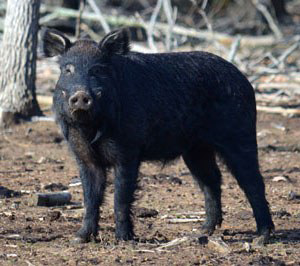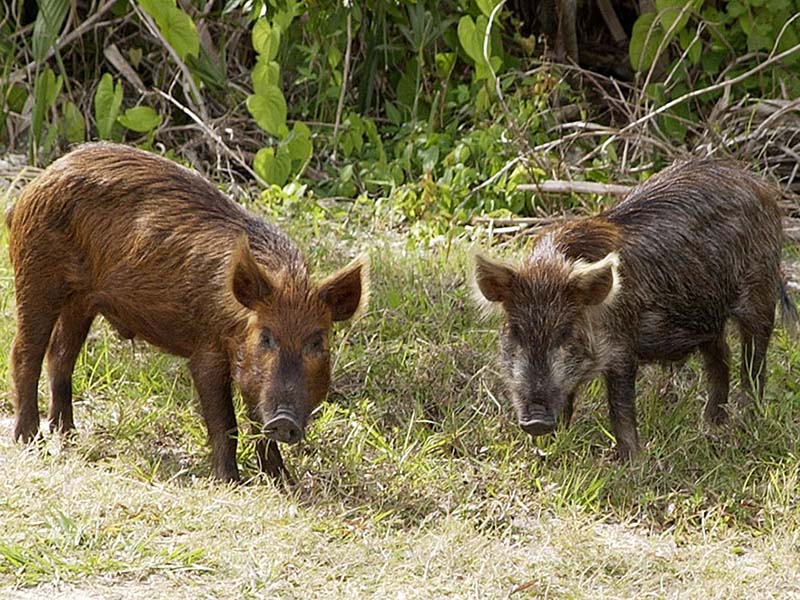Choctaw Hog Swine
 The Choctaw Hog is an American breed from Spanish ancestors, brought to the Americas
in the early 1500s. This is evidenced by the single toe hoof and neck wattles, which
many Spanish-derived hogs also have, like the Mulefoot Hog.
The Choctaw Hog is an American breed from Spanish ancestors, brought to the Americas
in the early 1500s. This is evidenced by the single toe hoof and neck wattles, which
many Spanish-derived hogs also have, like the Mulefoot Hog.
Frequently confused with the Pineywoods Rooters, a name for feral hogs in the Southeast US, although they're very different.
Named for the Choctaw Tribe that they've been associated with historically, the Choctaw Hog population in Oklahoma began with the Trail of Tears, in 1830s, because the Native Americans brought their animals with them.
The Choctaw Hog is a rare breed, mostly residing in southeast Oklahoma, which used to be the Choctaw Nation. Their numbers are only a few hundred individuals.

Characteristics
The Choctaw Hog has stayed mainly the same for the past 150 years. They're small-framed, about 120 pounds and their coloration is black with occasional white markings. Their ears are either erect or only slightly drooping, and they have large, fleshy wattles on each side of the neck.
They have fused toes, coming together in a mule-ish hoof. Their legs are long, and heavier in the forequarter, which gives them speed and an athletic build. While this might help their survival, it hinders carcass value.
Management
Choctaw Hog management in modern Oklahoma is very similar to the traditional way. Although they are ear-marked, they're allowed to wander free in the woods and can forage for their own roots, plants, acorns and berries. Every once in a while, they are rounded up with the help of working dogs, and the young are ear-marked. Those fit for consumption are confined with corn, and fed until they're market weight. The others are let go, back into the woods.
Although their management is very independent, if kept in confinement, Choctaw Hogs can become a tamer temperament.
References
The Livestock Conservancy PO Box 477, 33 Hillsboro St, Pittsboro, NC 27312
